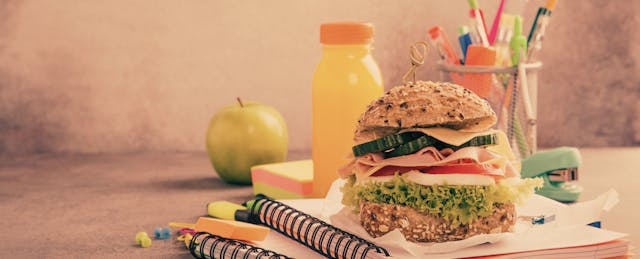It is that time of year when we look for recipes that can fill our stomachs and warm our hearts. We look for the traditional comforts that elicit memories of the past, and search for something new to add to our tables. For schools, we too need a recipe, filled with the old and the new, to activate brains, develop new skills and prepare future leaders. Consider these ingredients for your recipe in 2022.
Making it last: For a long time, schools have watched budgets decrease, demands increase and the complexity of learning grow. This combination puts stress and strain on all learning systems. Frayed systems were exposed during these pandemic years. Many schools now have funding that approaches what they need for success, but let’s remember that a single dose of anything rarely fixes a system. We need funding over time to buy the items needed for a great recipe.
Who is your recipe for? A great recipe for learning focuses on those who orchestrate and facilitate learning. Our teachers have allowed our system to survive in the lean moments, but the depth of what we’re asking from them outstrips their ability. Stressed, tired and exhausted are as close as we can get with words to describe their current reality. Our teaching pipeline is actively broken and rebuilding it will take decades. The recipe for the future must start with building something that honors and supports teachers.
Where are you baking? Growing up, some amazing leaders taught me how to cook over coals with a box covered with tin foil. It worked. Sort of. And it has been this way with the infrastructure of school buildings for decades. It is a recipe for disaster. Lead pipes, lead paint, asbestos, poor ventilation, lack of natural light and many other factors make our school buildings places that inhibit learning and limit teaching. There is no recipe for success in learning without buildings that can decrease stress and anxiety while also increasing the energy and joy for teachers and students. So many intentionally designed schools are being built or retrofitted to support modern learning, but these still pale in comparison to the volume of buildings that stifle learning.
Use the right ingredients: This may be the most difficult one as everyone has a little different taste. There are regional complexities to the recipes that we create, and we should honor that reality. But there is a danger in taking that too far—rarely is there a time to substitute salt for sugar or cinnamon for curry. Let's avoid the low hanging fruit. Learning science continues to develop, and it should guide us away from learning practices steeped in nostalgia to ones that can truly nourish more students. There are quality ingredients that are affordable that let students experience learning in active and engaging ways. These ingredients may have different labels based on where you live, but they give us the best chance to create a replicable recipe that fosters success over time.
Use the right tools: A fork isn’t a knife, and a spoon isn’t a fork. We can’t just use the tools that we know and feel comfortable with. The last decade has introduced more technology tools that can positively impact learning that I had over my entire career as an educator. Having the right tools makes us more efficient. Having the right tools blends our recipe to perfection. Creating our recipe with the right tools allows us to be craftspeople that bring the very best learning product forward.
The old recipe has shown its deep flaws. Even though it has been strained for decades, it took a pandemic to truly notice. We can change the recipe with a systemic approach that stays focused on what matters. We should all be asking for a different recipe as the final results will taste better than anything that we have ever created, experienced or designed for teachers and students.


